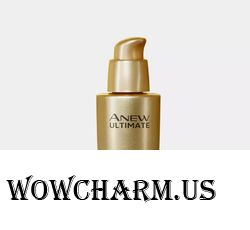Phytoestrogen in cosmetics: hopes and disappointments

Somewhat yes, but the payment is sometimes too big. The mass of contraindications, serious side effects do not allow to use widely hormonal medicines in the cosmetic purposes - only on medical indications and under supervision of the doctor. And to add natural or synthetic estrogen to creams of mass application it is prohibited by the law practically worldwide.
Another matter phytoestrogen is the substances emitted from plants and having the structure close to structure of estrogen, but deprived of those qualities which cause concerns when using female sex hormones.
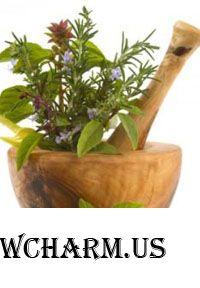 Phytoestrogen and phytohormones - two big differences
Phytoestrogen and phytohormones - two big differencesPhytoestrogen is not hormones, but receptors (special proteinaceous structures) of our organism react to them approximately as well as to the native hormones, that is are activated, starting processes of regeneration and synthesis of cages, including, collagen and hyaluronic acid.
But plants have also hormones which in botany and are called - "phytohormones". Auxins, gibberellina, tsitokinina and other groups of chemicals controlling growth and development of plants concern them. All these substances do not possess any estrogenopodobny action therefore neither in medicine, nor in cosmetology for the purpose of replacement of estrogen are not applied. Usually and in advertizing materials, and in various publications on cosmetology subjects the term "phytohormones" is used, meaning not true phytohormones, but substances having the structure similar to estrogen. Such here confusion of concepts occurred …
Phytoestrogen - from where undertakes and as work
Phytoestrogen is the substances extracted from plants which on the action can imitate effect of estrogen of the person, however, only in a certain concentration and in certain conditions.
Phytoestrogen is practically in all plants, especially there are a lot of them in such representatives of flora as soy, a ginseng, a red clover, a lucerne, a flax, a licorice, hop and red grapes.
Initially carried to phytoestrogen only sterols which are a part of vegetable fats. As on the chemical structure they remind estrogen of the person, theoretically, through activization of certain receptors on a surface of cells of the person, can stimulate process of formation of collagen and a fibronektin. In principle, in vitro, they and act. Here only, to start this process, their huge concentration in 5000 and more times surpassing concentration of our native estrogen is required. So if you just begin to oil skin soy, or you will add oil to cream, then, undoubtedly, the advantage to skin from it will be, but not due to estrogenic properties.
The desirable effect can be reached if by means of special additional methods to extract steroid phytoestrogen from oil, and in the necessary concentration to place them in cosmetic. Cosmetics of producers which decide to involve such difficult and not cheap process in modern conditions and costs expensive, of course. Usually cosmetic firms enter extracts of plants or vegetable oils into structure of the products. Phytoestrogen in it, undoubtedly, is, but here degree of their concentration raises great doubts in efficiency of such means.
Except sterols refer to phytoestrogen also phenolic connections of the hydrophilic nature, namely flavona, flavonona, izoflavona, halkona, etc. These substances are in vegetable fabric much, but as well as in a case with sterols, their concentration in extracts is far from necessary for manifestation of estrogenic effect. Special cleaning and methods of concentration is required. Firms which own such technologies estimate the products very expensively.
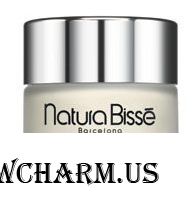 For example, "The strengthening gel-cream with izoflavon (phytoestrogen) for mature skin" (Essential Shock Gel-Cream) from Natura Bisse (Spain). The structure of this means, along with numerous other useful components, includes phytoestrogen (izoflavon) allocated from extracts of soybeans and a root of the Florentine iris. The composition of cream allows to recommend it as the good rejuvenating means effectively resisting to age changes in mature skin. However, and this producer as however, and all others, does not mention in what concentration izoflavona enter this cream.
For example, "The strengthening gel-cream with izoflavon (phytoestrogen) for mature skin" (Essential Shock Gel-Cream) from Natura Bisse (Spain). The structure of this means, along with numerous other useful components, includes phytoestrogen (izoflavon) allocated from extracts of soybeans and a root of the Florentine iris. The composition of cream allows to recommend it as the good rejuvenating means effectively resisting to age changes in mature skin. However, and this producer as however, and all others, does not mention in what concentration izoflavona enter this cream. Well, and the bowl of all on a jar with cosmetic can just read among the other phytoestrogen components and what and in what concentration - guess. Most likely, the majority of these means do not make any estrogenic impact, but also to tell that they are useless, it is impossible!
Besides estrogenic, phytoestrogen including izoflavona, have excellent antioxidant properties, ukreplyayushche affect the moisture-holding and moisture preserving systems of skin. As a result of use of the cosmetics containing phytoestrogen, skin is smoothed, looks younger and healthier even if their estrogenic influence and is not shown fully. Besides, extracts of plants and oils contain also the mass of other useful components: fatty and fruit acids, vitamins, minerals and minerals.
That it is better: to smear or eat?
Many phytoestrogen is widely used as pharmaceutical medicines and as nutritional supplements. It appears, at application inside they are capable to affect many aspects of our health, is besides especially positive: to strengthen heart, to increase immunity, to prevent oncological diseases, to promote strengthening of skeletal system, to improve a condition of skin.
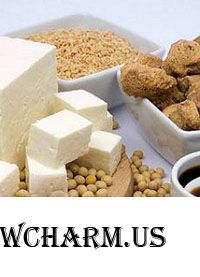 For example, soybeans. The main izoflavona of soy – genistein, daidzein and glitsitin. In the majority of not fermented soy products (soy milk, tofu cheese) they contain in a type of glycosides (genistin, daydzin and glitsitin). Under the influence of intestinal microflora glycosides will be transformed to an active form genistein and daidzein, and then to their metabolites (ekvuol), these active izoflavona possess weak estrogenic and anti-estrogenic action depending on the level of estrogen in an organism. That is, when it is necessary (in an organism not enough estrogen), they act as their substitutes (solving many problems connected with the shortage of hormones) and when estrogen the surplus, izoflavona, competing with them for receptors, thereby reduce the general estrogenic load of an organism, preventing development of many hormonedependent diseases. Besides, it is proved that phytoestrogen of soy has antioxidant properties, well influence the mineral density of bones, protect from loss of a bone tissue, prevent cardiovascular diseases.
For example, soybeans. The main izoflavona of soy – genistein, daidzein and glitsitin. In the majority of not fermented soy products (soy milk, tofu cheese) they contain in a type of glycosides (genistin, daydzin and glitsitin). Under the influence of intestinal microflora glycosides will be transformed to an active form genistein and daidzein, and then to their metabolites (ekvuol), these active izoflavona possess weak estrogenic and anti-estrogenic action depending on the level of estrogen in an organism. That is, when it is necessary (in an organism not enough estrogen), they act as their substitutes (solving many problems connected with the shortage of hormones) and when estrogen the surplus, izoflavona, competing with them for receptors, thereby reduce the general estrogenic load of an organism, preventing development of many hormonedependent diseases. Besides, it is proved that phytoestrogen of soy has antioxidant properties, well influence the mineral density of bones, protect from loss of a bone tissue, prevent cardiovascular diseases.If you are not sure of harmony of products from soy and feel fears of rather gene modification of soybeans, pay attention to such source of phytoestrogen as a flax.
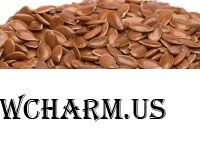 Flax seed cover – the richest vegetable source of wonderful representatives of phenolic phytoestrogen - lignan. Lignana, coming with food to our organism, under the influence of specific intestinal microflora podvergayutya to biotransformations also pass into an active form. By the way, if to use them outwardly, then they have no estrogenic effect. The use of the products containing lignana inside allows to normalize a hormonal background by replacement of estrogen. Modern methods of extraction of lignan allowed to create the foodstuff (linen flour) enriched with this phytoestrogen. It was proved that lignana along with estrogenic have anti-virus, antibacterial, and antifungal properties, are powerful antioxidants and immunomodulators.
Flax seed cover – the richest vegetable source of wonderful representatives of phenolic phytoestrogen - lignan. Lignana, coming with food to our organism, under the influence of specific intestinal microflora podvergayutya to biotransformations also pass into an active form. By the way, if to use them outwardly, then they have no estrogenic effect. The use of the products containing lignana inside allows to normalize a hormonal background by replacement of estrogen. Modern methods of extraction of lignan allowed to create the foodstuff (linen flour) enriched with this phytoestrogen. It was proved that lignana along with estrogenic have anti-virus, antibacterial, and antifungal properties, are powerful antioxidants and immunomodulators.Properties of phytoestrogen are not studied up to the end, we only at the beginning of a way yet, but also doctors and cosmetologists are sure of huge prospects of medical, preventive, improving and cosmetic medicines with phytoestrogen.
Copy the code and insert into a window of creation of record on LiveInternet, previously having included the Source mode there.
HTML-code: 
|
|
| The BB code for forums: |
How will it look?
wowcharm.us → Phytoestrogen in cosmetics: hopes and disappointments

|
Over the years their synthesis decreases, it becomes more difficult to maintain worthy appearance. It would seem, there are not enough times of the estrogen why not to address the help from the outside? Hormonal tablets, hormonal ointments, hormonal cosmetics - unless they cannot correct a situation and prolong youth of the face and bodies? Somewhat yes, but the payment is sometimes too big... Read more: |
| "Meadow geranium | | | Valuable prickle …" |
|
Other discussed materials:
Results of the 118th stage "Magnets". Winners.
The personal cosmetologist - sauerkraut
I have gifts)) Brag
Fervent Katyusha of Riglis, we wish happy birthday!
|





